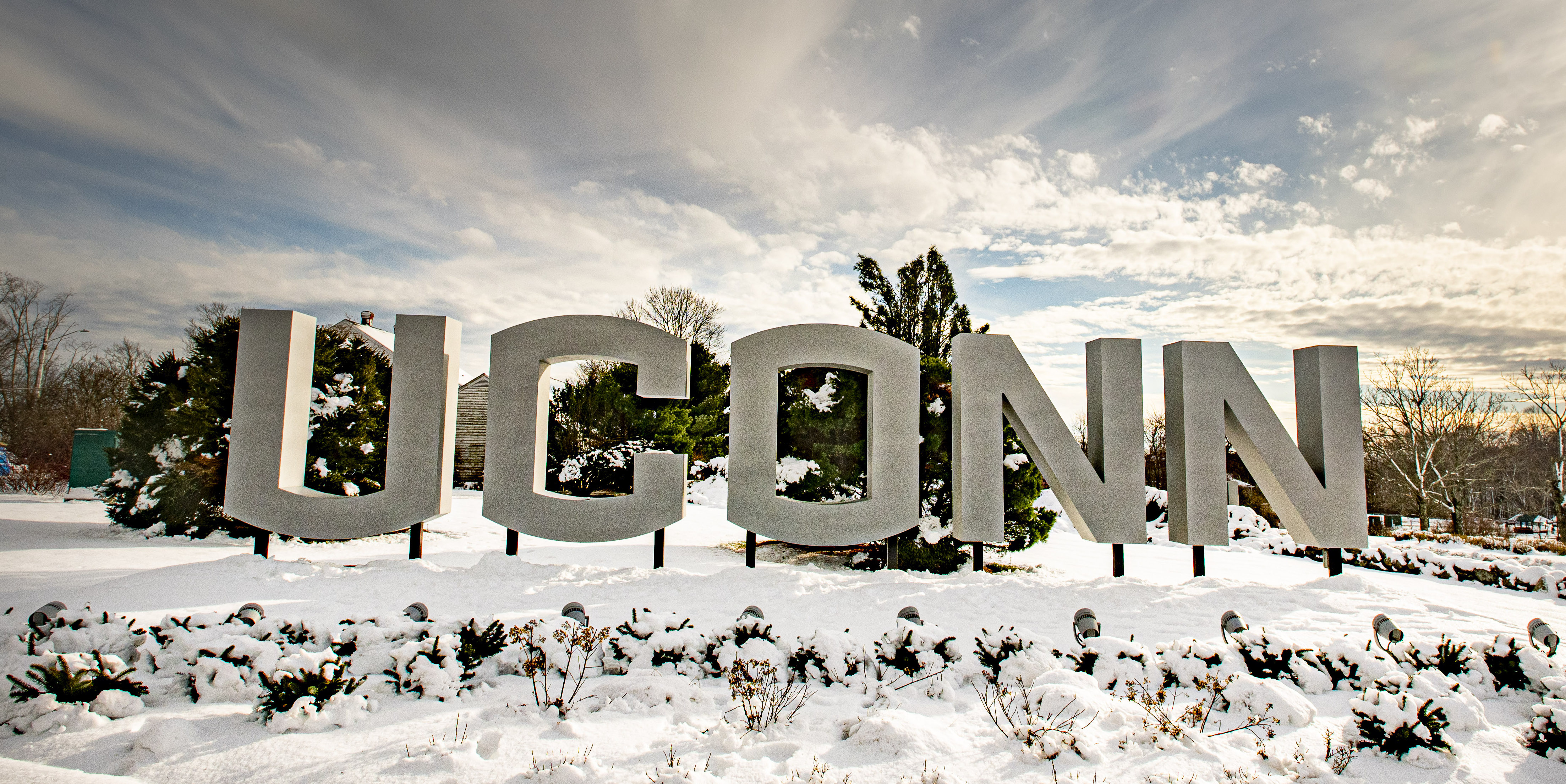UConn has successfully welcomed back a healthy and enthusiastic student population, using re-entry testing methods to monitor for COVID and facilitate a return to in-person living and learning on its campuses.
More than 10,000 students are now living in Storrs residence halls and attending classes in person, along with about 400 Stamford residential students and thousands of commuter students at those campuses and in Hartford, Waterbury, and Avery Point.
Classes were fully online for the first two weeks of the spring semester. As part of its rigorous arrival and pre-arrival testing strategy, students took COVID tests in the days just before their return to in-person learning so they could remain at home to recover if they tested positive.
UConn also administered re-entry tests last weekend during the move-in period, providing isolation beds for those who tested positive and couldn’t return home.
The most recently compiled data, which was posted Wednesday on the University’s COVID-19 Dashboard, showed that UConn had 28 current COVID cases among Storrs residential students and had logged reports of 96 new cases over the last seven days among off-campus Storrs students.
Eleanor Daugherty, UConn’s dean of students and associate vice president of student affairs, told students in a letter Wednesday that while the numbers are notable, they are not a surprise given the large population of our campuses and the state’s positivity rate.
In fact, UConn’s figures are better than those of the state in general. Connecticut’s seven-day average test positivity as of Wednesday was 7.43%, according to the Office of the Governor, while UConn’s was 2.8%.
In all cases, the person testing positive either is recovering at home or their off-campus residence, or has been placed in isolation housing on campus to avoid the risk of spreading the virus to others.
“Those students are cared for, isolated, and on the path to recovery. Many of those students were able to isolate at home. For residential campuses, this has meant less use of isolation beds,” she said.
“As they get well and more students continue to test positive, we will continue to stay in red until we have effectively identified and contained spread,” Daugherty said, referencing the color-coded alert levels that provide guidance on gathering precautions for non-academic and non-athletics events.
Surveillance testing is conducted on close contacts of people who have been confirmed to have COVID. UConn also continues to test students whose symptoms might suggest COVID and students who are tested as part of the exemption they received from complying with UConn’s vaccination requirement.
Pre-arrival testing is under way this week at several of UConn’s regional campuses, and the results will be reflected on the dashboard once it is updated on Feb. 9.
The high rate of vaccination compliance at UConn has been a clear benefit in its work to reduce and contain the spread of the COVID virus – particularly given the highly contagious nature of the Omicron variant.
About 98% of UConn’s residential students at Stamford and Storrs are fully vaccinated, along with others who have received the first of their two doses. At the regional campuses, the full vaccination percentages range from 92% to 99%.
Students also have been diligent about getting booster shots, with more than 16,000 already reporting them to the University. Of those, almost 13,500 are among Storrs residential and commuter students.
UConn also recently received 30,000 test kits, each containing two individual tests, that will be distributed to students at all campuses.
Daugherty said students have been eager to have access to tests in circumstances where, for instance, they wished to return home but did not want to inadvertently bring the virus back if they were asymptomatic and unaware that they were infected.
“Our students have always put the care and well-being of others at their forefront of their actions,” she said.
“Increased access to testing, getting boosted, and continued participation in masking and preventative health measures will help us end this academic year strong. We’ve asked a great deal of them and I’m very grateful.”



